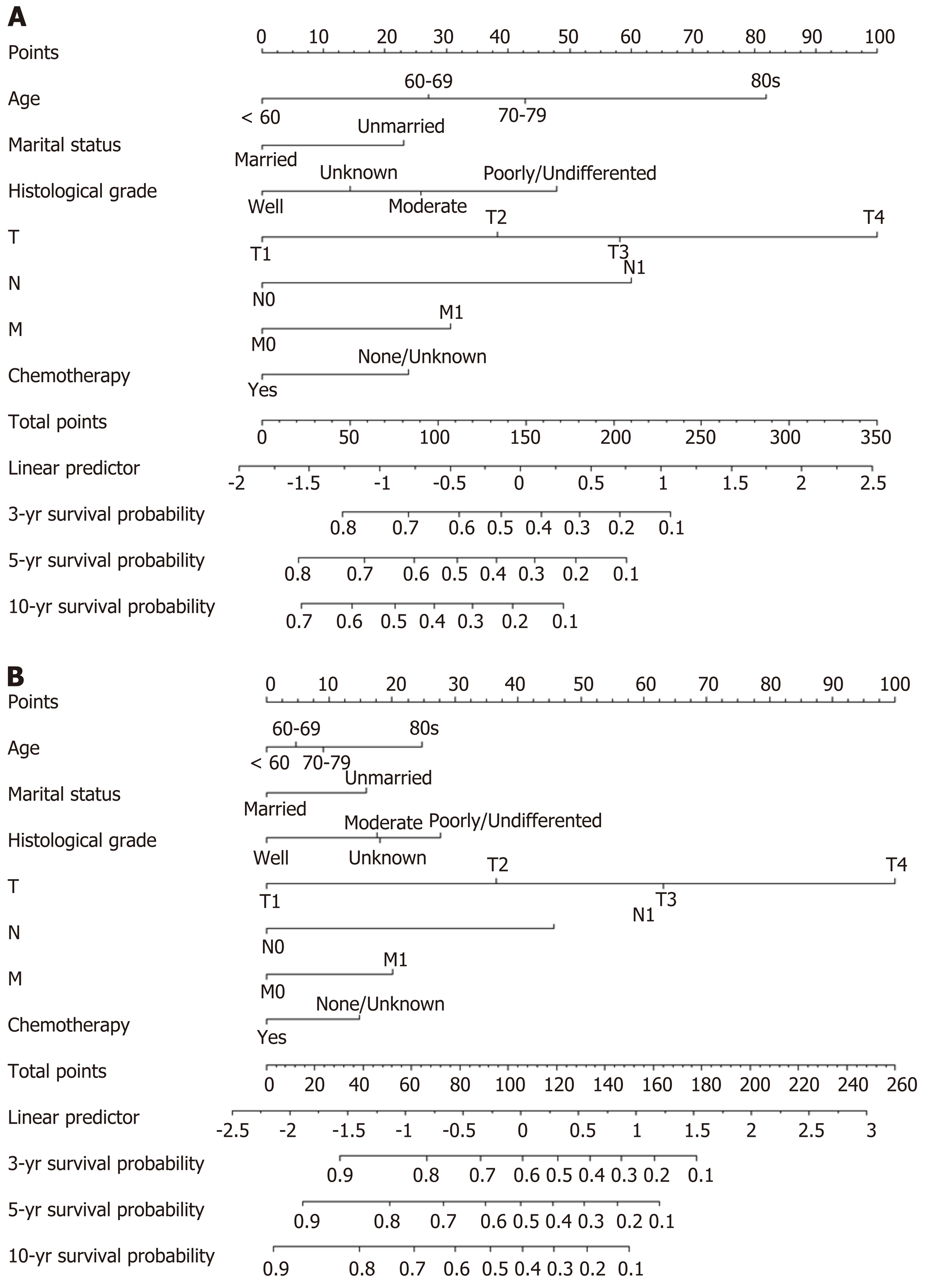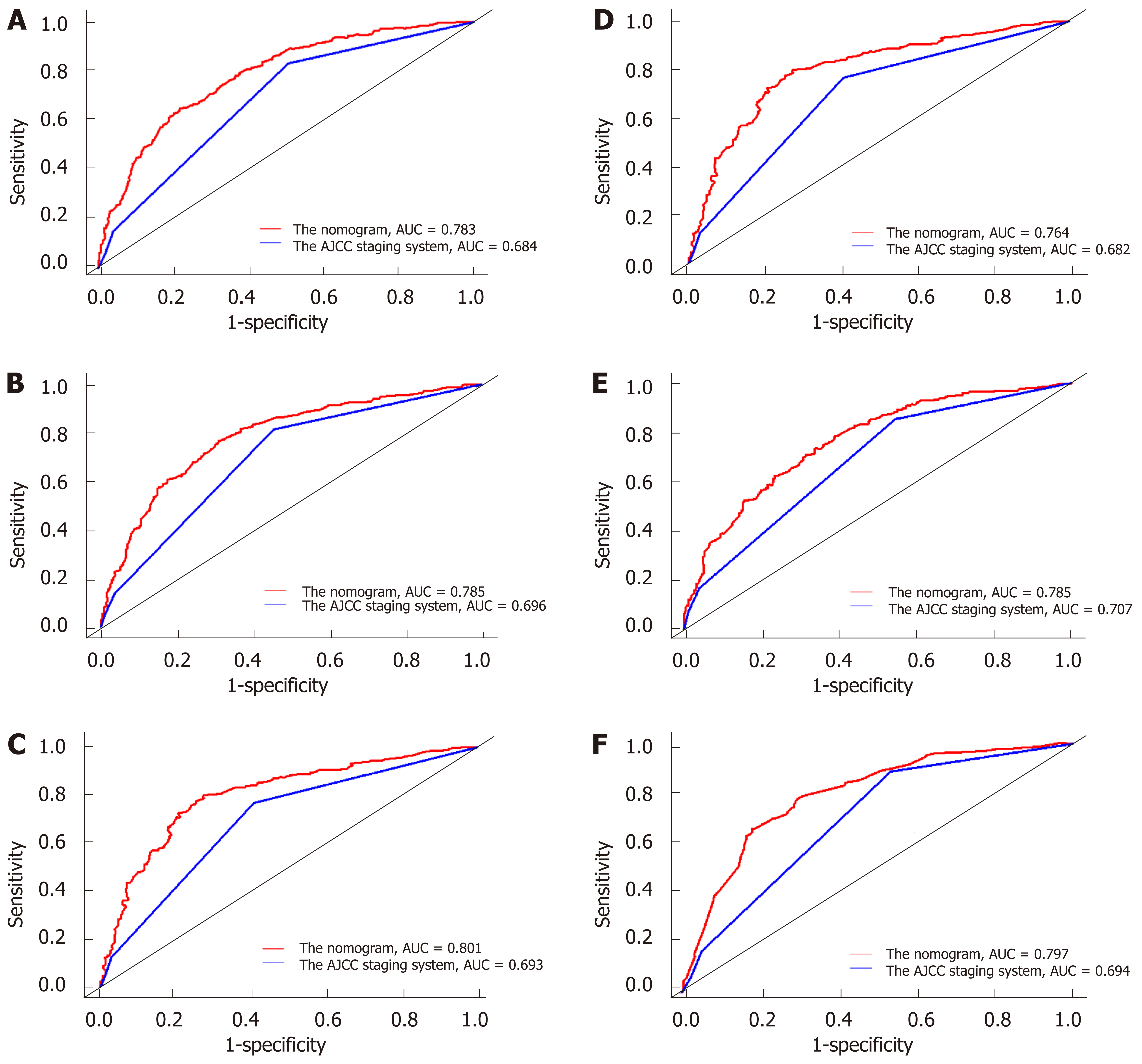Copyright
©The Author(s) 2020.
World J Gastroenterol. Feb 7, 2020; 26(5): 535-549
Published online Feb 7, 2020. doi: 10.3748/wjg.v26.i5.535
Published online Feb 7, 2020. doi: 10.3748/wjg.v26.i5.535
Figure 1 Nomogram to predict 3-, 5-, and 10-year overall survival and cancer-specific survival of patients with invasive intraductal papillary mucinous neoplasms of the pancreas who underwent surgical resection.
A: Nomogram to predict 3-, 5-, and 10-year overall survival of patients with invasive intraductal papillary mucinous neoplasms of the pancreas who underwent surgical resection; B: Nomogram to predict 3-, 5-, and 10-year cancer-specific survival of patients with invasive intraductal papillary mucinous neoplasms of the pancreas who underwent surgical resection.
Figure 2 Time-dependent receiver operating characteristic curves of the nomogram and the American Joint Committee on Cancer staging system.
A: 3-year overall survival of the training cohort; B: 5-year overall survival of the training cohort; C: 10-year overall survival of the training cohort; D: 3-year overall survival of the validation cohort; E: 5-year overall survival of the validation cohort; F: 10-year overall survival of the validation cohort.
Figure 3 Time-dependent receiver operating characteristic curves of the nomogram and the American Joint Committee on Cancer staging system.
A: 3-year cancer-specific survival of the training cohort; B: 5-year cancer-specific survival of the training cohort; C: 10-year cancer-specific survival of the training cohort; D: 3-year cancer-specific survival of the validation cohort; E: 5-year cancer-specific survival of the validation cohort; F: 10-year cancer-specific survival of the validation cohort.
Figure 4 Decision curve analyses of the nomogram and the American Joint Committee on Cancer staging system.
A: 3-year overall survival of the training cohort; B: 5-year overall survival of the training cohort; C: 10-year overall survival of the training cohort; D: 3-year overall survival of the validation cohort; E: 5-year overall survival of the validation cohort; F: 10-year overall survival of the validation cohort; G: 3-year cancer-specific survival of the training cohort; H: 5-year cancer-specific survival of the training cohort; I: 10-year cancer-specific survival of the training cohort; J: 3-year cancer-specific survival of the validation cohort; K: 5-year cancer-specific survival of the validation cohort; L: 10-year cancer-specific survival of the validation cohort.
- Citation: Wu JY, Wang YF, Ma H, Li SS, Miao HL. Nomograms predicting long-term survival in patients with invasive intraductal papillary mucinous neoplasms of the pancreas: A population-based study. World J Gastroenterol 2020; 26(5): 535-549
- URL: https://www.wjgnet.com/1007-9327/full/v26/i5/535.htm
- DOI: https://dx.doi.org/10.3748/wjg.v26.i5.535












